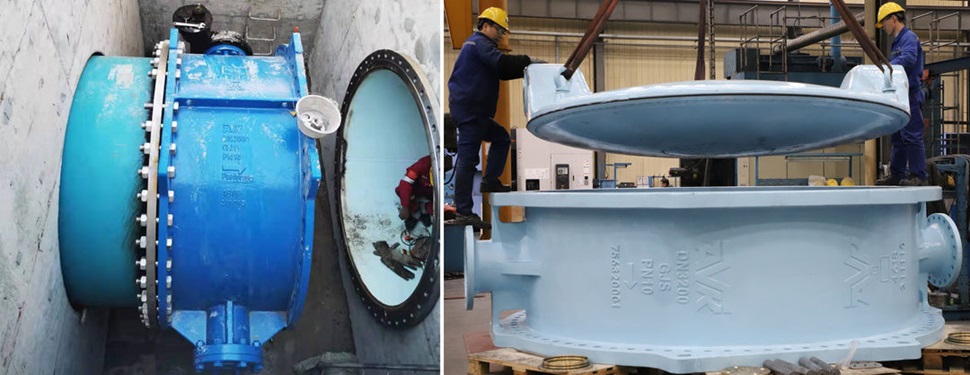
AVK China has delivered valves to a large-scale project in Hangzhou with the purpose of preventing saltwater entering the local drinking water supply.
Every year, thousands of tourists gather to the Qiantang River in Hangzhou, China, to witness the phenomenon known as the Qiantang Tide. This may appear to be a tsunami, but it is actually a tidal bore, or a wave that flows upstream as high tide approaches. Tidal bores can be found in more than 80 rivers around the world. The one on the Qiantang River, on the other hand, is the world's largest, with waves up to 10 metres high, a width of 3 kilometres, and a racing speed of 24 kilometres per hour. Its rumble is audible more than an hour before it arrives.
Fascinating, but complicated
More than 80% of the water supplied to the Hangzhou urban area comes from the Qiantang River, and this phenomenon is more than just an exciting event for Hangzhou residents. During the tidal flood season, the river's rising salt tide threatens drinking water sources for millions of Hangzhou residents.
As a result, Hangzhou has established a water intake upward movement project to optimise the layout of water intake in order to coordinate the development of water sources and urban construction, as well as to reduce the threat of saltwater intrusion.
The Hangzhou water intake was relocated to the Shimen Shajiang section of the Fuchun River, and water intake pump stations were constructed at the Jiuxi water plant. A pipeline project was started at the Shansha reservoir, and the water plant and reservoir's existing facilities were renovated.
The first intake pump station was built to handle 1.7 million tonnes per day. However, in the new project, the water intake head, pump station, and water pipelines are designed and built on a prospective scale of 3 million tons/day to accommodate an increasing water demand.

The project is planned to be implemented in two phases. AVK China has provided a complete valve solution for the first phase, with exceptional durability and flexible configuration options to meet the project’s strict requirements.
In this first phase, the construction includes the water intake pump station to the Jiuxi water plant, a water transmission pipeline from the Shanhusha reservoir (parallel double pipes, single length about 6.6 km), multi-source water distribution wells in Jiuxi water plant, and relevant equipment renovation.
Products delivered to the project (so far):
- 22 x double eccentric butterfly valves (DN1600-3200)
- 40 x resilient seated gate valves (DN300-800)
- 22 x air valves (DN300)
- 5 x hydraulically operated check valves (DN1000-1200)